Big Safari, the Kennedy Assassination, & the war for control of the Venice Airport
“I knew by now that when a group of individuals gravitated toward one another for no apparent reason, or inexplicably headed in the same direction as if drawn by a magnetic field, or coincidence piled on coincidence too many times, as often as not the shadowy outlines of a covert intelligence operation were somehow becoming visible.”—New Orleans District Attorney Jim Garrison
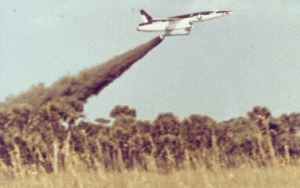 A fierce war being waged for control of the Venice Municipal Airport has led to the discovery of covert CIA and military operations, dating back to at least 1959, which go well beyond what was previously known to have taken place there.
A fierce war being waged for control of the Venice Municipal Airport has led to the discovery of covert CIA and military operations, dating back to at least 1959, which go well beyond what was previously known to have taken place there.
Operations at the Venice Airport have involved individuals whose names figure prominently in the Kennedy Assassination, for example Texas oilman General D. H. (Harry) Byrd, owner of a defense contractor which in the late 50's and early 60's built and launched Regulus II cruise missiles from the beach directly in front of the Venice Airport in a program run out of at Eglin AFB in Florida’s panhandle.
“Vought's Regulus II was a Mach 2 capable cruise missile optimized for launch from surfaced submarines and other Navy surface vessels, and later served as a high-speed target drone for other weapon development programs,” company literature stated.
Byrd’s Chance-Vought Aircraft, later re-named LTV, would become—almost immediately after the JFK assassination—a principal beneficiary of the massive military spending accompanying the growth of American military involvement in the Vietnam War.
General Byrd, of course, was the owner of the Texas School Book Depository in Dallas, where the Warren Commission alleged Lee Harvey Oswald fired the shots which killed President John F. Kennedy.
Byrd also ran the Texas and Louisiana Civil Air Patrol, at the same time cadets Barry Seal and Lee Harvey Oswald were meeting Kennedy assassination conspirator Capt. David Ferrie at a two-week summer camp of the Louisiana Civil Air Patrol at Barksdale Air Force Base in July of 1955.
Tracking down some loose ends in Cuba.
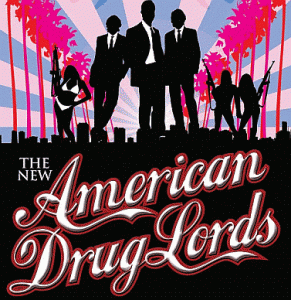 Amazingly—especially for a tiny airport located in an out-of-the-way retirement community—according to a recently-uncovered police report there is a second man active at the Venice Airport with relevance to the Kennedy assassination as well.
Amazingly—especially for a tiny airport located in an out-of-the-way retirement community—according to a recently-uncovered police report there is a second man active at the Venice Airport with relevance to the Kennedy assassination as well.
According to this recently-unearthed police report, that man, a suspected CIA Agent, flew to Cuba in 1969 on a mission to assassinate one of “four or five” of the men then still alive who had been part of the Kennedy assassination “hit team.”
A Dec 6 1978 memo from the Chief Deputy of the Sarasota Sheriff's Dept. to the FBI's Tampa office on the subject on Assassination of President John F. Kennedy" states he recently learned that four or five years ago "Stephen Ruth, arrested several years earlier on a burglary charge, had been the passenger on an airplane that crashed in Cuban territory in…early 1970."
"At that time Ruth was suspected of trafficking in narcotics… had spent some time in jail in Cuba… and on his release returned to Venice Florida."
The day after Ruth was arrested, "Ruth contacted Corporal Lynn Taylor of the Sarasota Sheriff's office Venice Office. Stephen Ruth reportedly told Corporal Taylor that his true mission in Cuba was to do away with an individual who was incarcerated in a Cuban prison."
"According to Ruth, this individual was one of five persons involved in the assassination of President John F. Kennedy. Ruth told… the officer….that within five years he would have some nice cars and as much money as he needed."
"Corporal Ruth asked Ruth if he had done what he was sent there to do and Ruth replied that the job had been done, and though there were no there comments, Corporal Taylor advised that he had the feeling Ruth was inferring he had been sent there by the Central Intelligence Agency (CIA.)"
The police report was found in the archives of the Mary Ferrell Foundation, in an FBI folder from the House Select Committee on Assassinations. JFK VOLUME XV.
There are valid reasons to suspect Ruth may be telling the truth. For one thing, as we will see tomorrow, within five years Ruth was rich. And Ruth also appears to have unexplained pull with authorities in Florida.
"50 years of covert ops. No film at eleven."
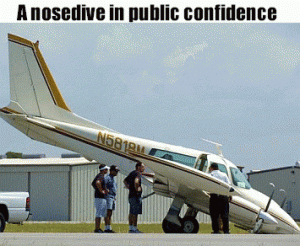 More details of the new revelations will be disclosed over the next several days, and placed in context of their importance in any future 9/11 investigation.
More details of the new revelations will be disclosed over the next several days, and placed in context of their importance in any future 9/11 investigation.
First, some brief background on the current controversy, and how it led to new discoveries about the 50-year history of covert operations at the Venice Airport.
The latest discoveries began after citizens of Venice asked if we would cover the momentous struggle underway there, the raging controversy over who will control the Venice Airport.
On one side are a reform city council, elected to get a handle on the more-or-less well-organized elite deviance which has seemingly emanated from the airport since time immemorial.
On the other: the FAA, the Dept of Homeland Security, and the Sarasota Herald-Tribune, which has been leading a strenuous effort to insist that the city allow Huffman Aviation’s current iteration—controlled by a federal receiver after Art Nadel took up residence in the slammer—to build four new jet hangers at the airport.
The ferocity of the battle has been puzzling.
The airport—while valuable because it has no tower and thus offers easy, unwatched, and uncontrolled access to the Gulf of Mexico, the Caribbean, and other Points South—does not seem irreplaceable.
The operations which have escaped public scrutiny for years in Venice would seem to be able to relocate somewhere else fairly easily.
Finders play Finders keepers
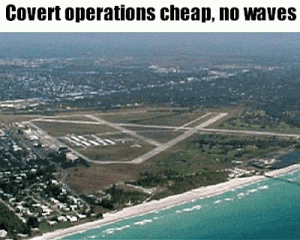 There are other out of the way airports in Florida with docile local populations, easily-bought off public officials, and newspapers whose watchdog functions can be easily lulled through occasional gifts of red meat.
There are other out of the way airports in Florida with docile local populations, easily-bought off public officials, and newspapers whose watchdog functions can be easily lulled through occasional gifts of red meat.
Why fight so hard to remain in Venice, where its been (pretty much) exposed?
In an effort to make sense of the fierce passions on display, we took a new look at the history of the Venice Airport. And the answer we found there, and which best fits the circumstances, owes more to the vagaries of human nature than to the powers of Reason.
The “boys” at the Venice Airport are fighting so hard to keep their dirty operations based there… because that’s where they think they belong.
Why? Because they were there first.
The Venice Airport, of course, first became infamous after 9/11 for having played host to three of the four terrorist pilots involved in the attack.
The Airport’s reputation was further tarnished with the subsequent discovery—first reported exclusively here—that the owner of Huffman Aviation, Wallace J. Hilliard, was implicated in international heroin trafficking, and had had his Lear jet permanently seized by the DEA after it was caught carrying 43 lbs. of heroin in Orlando on July 25, 2000.
That date was less than three weeks after Mohamed Atta arrived—from Afghanistan, according to Rudi Dekkers, speaking with reporters on Sept. 12—a country which, even then, was responsible for most of the world’s heroin—to attend his Venice FL flight school.
It came as little surprise when this seemingly fruitful line of questioning was ignored by the 9/11 Commission.
"National security been berry berry good to me."
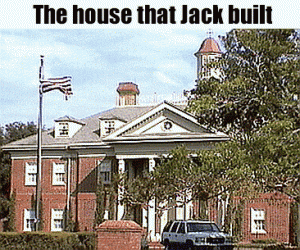 And when the new owner of Huffman Aviation was arrested recently, and charged with running a Ponzi scheme which stole almost $400 million from local investors, it began to seem like business as usual at the Venice Airport.
And when the new owner of Huffman Aviation was arrested recently, and charged with running a Ponzi scheme which stole almost $400 million from local investors, it began to seem like business as usual at the Venice Airport.
“Spooks,” as we have been reporting for more than five years, are no strangers at the Airport where Mohamed Atta's hijackers made their base in the U.S.
Venice was home to the headquarters of Beverley Enterprises, owned by Jackson Stephens, known as President Jimmy Carter’s roommate when both men were at the Naval Academy, we previously reported, in “Welcome to TerrorLand.”
Jackson Stephens’s name is almost invariably linked to America’s super-secret National Security Agency, the NSA, as well as to—it must be said—the massive cocaine trafficking through Mena, Arkansas during the 1980’s in support of the Contra war in Nicaragua.
From Welcome to TERRORLAND, chap 1:
“When we interviewed the former Venice Chief of Police, he seemed more than a little embarrassed, and totally apologetic about what had been allowed to happen at the tiny airport in his town. He asked that we not judge city officials too harshly. They had little or no control over what went on at the Venice Airport.
“The Venice Airport is the kind of place where it’s not unusual to see a Blackhawk helicopter touch down at three in the morning and then take off again 30 seconds later,” the former Chief said with a shrug. “Or the airport can be quiet and deserted one minute, and the next have 5000 paratroopers landing. That’s just the way it is here.”
The Most Dangerous Game
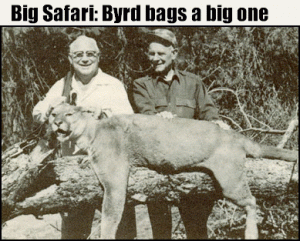 While Byrd’s Texas Book Repository was being put to what Mr Byrd no doubt claimed was unauthorized use on Nov. 22 1963, Mr Byrd himself had been otherwise engaged.
While Byrd’s Texas Book Repository was being put to what Mr Byrd no doubt claimed was unauthorized use on Nov. 22 1963, Mr Byrd himself had been otherwise engaged.
With a big assist from Linda Minor, a lawyer and invaluable researcher into all things Texan, and resources freely available at the amazing Mary Ferrell Foundation, we make bold to offer a brief distillation of what happened next…
On the day of the assassination Byrd was conveniently “away from his desk.”
He was out of the country on a two-month safari in central Africa. When he returned in January, his good friend Lyndon Johnson was the new President of the United States, his School Book Depository building had become famous in his absence, and a huge juicy defense contract was waiting on his desk, awarded to his company to build fighter planes, and to be paid from the 1965 Congressional budget… even though it had not yet been approved by Congress.
It sounds a lot like Al Capone, who was famously taking some sun down in Miami when the St Valentines Day Massacre shook Chicago. That is, of course, just conjecture. But here’s something that’s not:
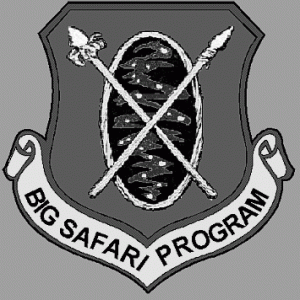 We called on a source, now retired, who had worked in the American aerospace industry building satellites for the NSA for several decades.
We called on a source, now retired, who had worked in the American aerospace industry building satellites for the NSA for several decades.
He might have known General Harry Byrd, we figured. He had… in fact, he had worked for him at LTV.
And in between anecdotes that are colorful, but neither here nor there, he mentioned that, oh, bye the bye, did we know that
When Byrd’s defense aerospace firm LTV “went big” after the JFK assassination, he told us, it had become a big part of an overarching Air Force Operation…
For years afterward, he said, every self-respecting big-time Air Force defense program—everyone who was anyone, in other words—came under the overall rubric of an Air Force Operation whose declassified code-name, when he named it, give us pause.
It was called Operation Big Safari.
"The Earth is one big safari park for these good old boys, and we're the lions and tigers and bears."
Oh my.
Stay Tuned.